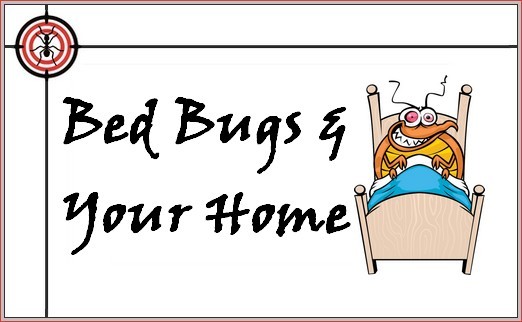There is no easy way to say it... bed bugs want to suck your blood! No, really, that is what they feed on: your blood, Particularly when you are snuggled in your bed and your temperature rises, signaling to bed bugs dinner is served. Bed bugs are small, flat wingless insects that are reddish-brown in color and approximately one-quarter inch long, before feeding, about the size of a small apple seed. They come out at night and are fast crawlers.
How do bed bugs get into your home?

-
- Travel, or more specifically where you stay when you travel.
That cute bed and breakfast with artisan breakfasts is as likely to have bed bugs as a one-star hotel or 5-star luxury hotel. They are consummate hitchhikers, hitching a ride in luggage, purses, backpacks, or other items placed on soft or upholstered surfaces. They can travel between rooms in multi-unit buildings, such as hotels.
-
- Used furniture.
When buying a used sofa, anything fabric covered, or mattress always check the seams for the presence of bed bugs.
-
- Rolls of wallpaper.
Bed bugs prefer good hiding places during the day, and wallpaper provides that.
While bed bugs may bite other animals, the animal they like best is us. Not only are they specifically attracted to the blood of humans, they are drawn by your body heat, and the carbon dioxide humans exhale.
Health impacts of bed bugs:

- Allergic reactions to the bite.
- Skin rashes, which can be a slight redness to blisters.
- Psychological issues, understandable when you think of being a host for bloodsuckers.
Remember bed bugs can withstand very cold temperatures and go months between feedings. Once a bed bug finds a host, it feeds for up to 10 minutes until repletion. The bite marks they leave behind, in clusters or in a row on exposed skin on the chest, arms or legs, are telltale signs of a bed bug infestation. Unlike the buzz of a mosquito or the sensation of something crawling on you, the saliva of a bed bug acts as an anesthetic as well as promoting increased blood flow at the bite area. This makes the feeding process painless and quick. After feeding, bed bugs hide up to ten days, mate and lay eggs, which is nothing you want to hear about.
Telltale signs of bed beds:

- Marks on your skin.
- Blood droplets on your bed.
- Actual bedbugs in the crevices of your bed, and along the seams.
- Their shed skins or droppings.
If you suspect your home has a bed bug infestation, call Victoria’s Pest Control for an appointment to verify it and start a plan of action for bed bug removal. Trying to do it on your own is time consuming and messy. Bed bugs can hide behind light switches, wallpaper, picture frames, and box springs. While you may be able to get some, a professional pest control company can get them all, allowing your family to get a well-earned rest.
There had been a couple of consumer grade insecticides that worked on bed bugs, however, in the last couple of years, that efficacy has diminished. The commercial grade applications work far better which only professionals have access to.
Prior to your appointment, here are some things you can do:
-
- Wash your bedclothes on the hottest water setting, and dry on high as well.
-
- Buy bed bug interceptor cups, these go around each bed footing. Sprinkle with talcum powder. They are sloped so when bed bugs fall in, they cannot climb out.
-
- Vacuum, but be prepared to toss the vacuum bag after you have sealed it when you are done.
Start with a call to Victoria’s Pest Control and end with a restful sleep.


Recent Comments